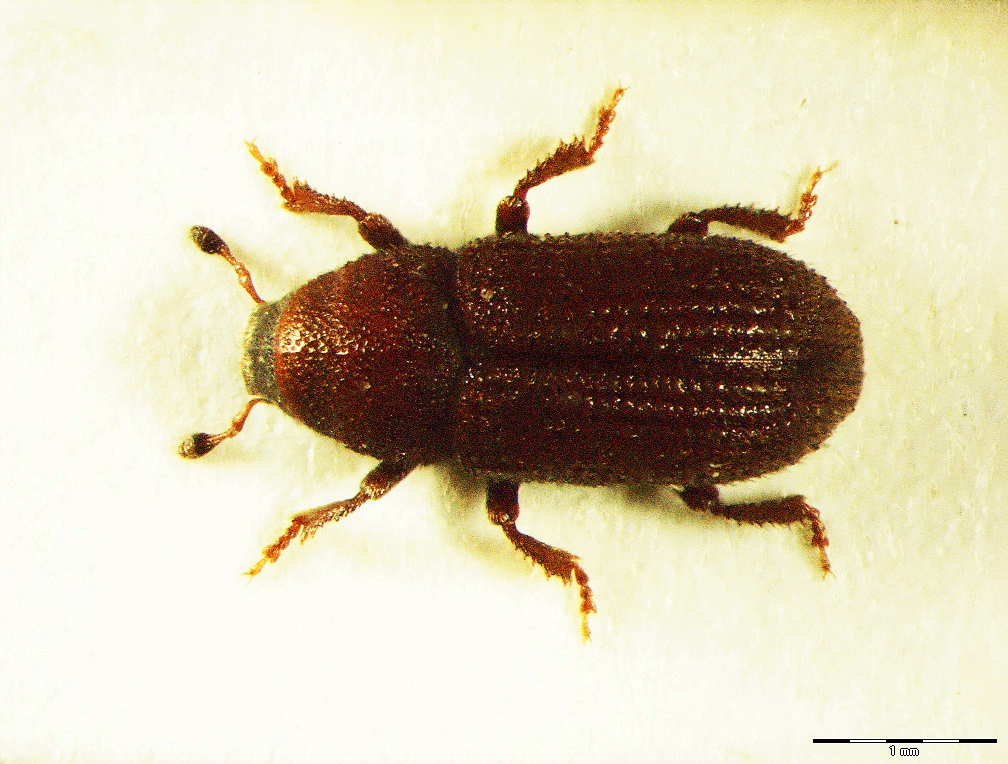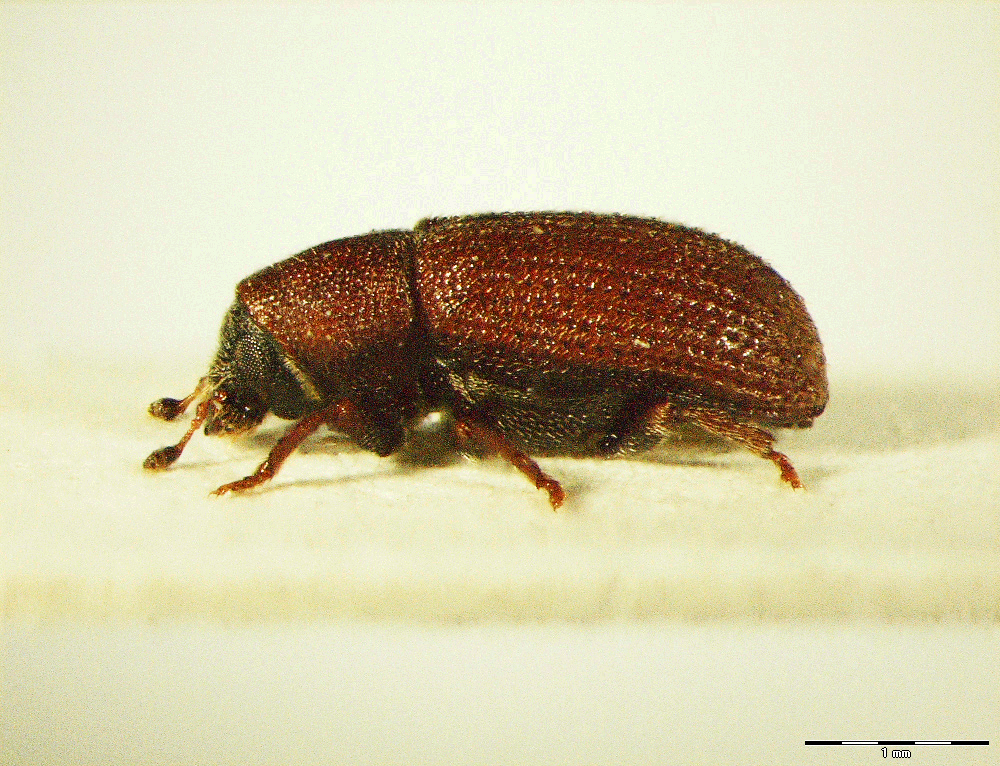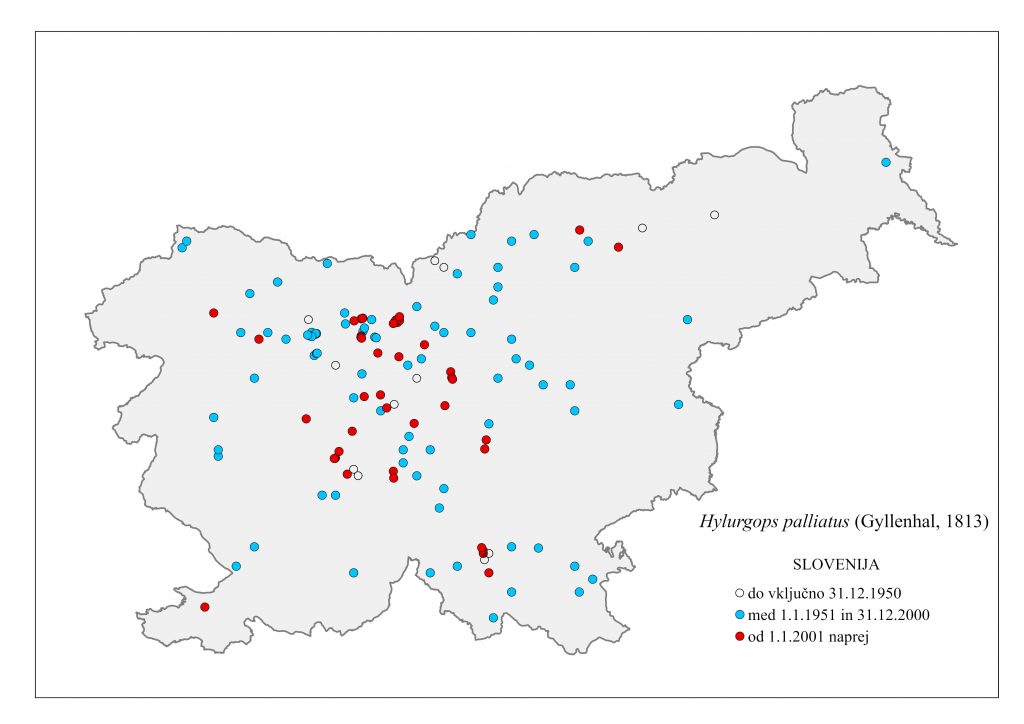02.02. Hylurgops palliatus (Gyllenhal, 1813)
Presence
E: AU BE BH BU BY CR CT CZ DE EN FI FR GB GE HU IR IT LA LS LT MC NL NR NT PL SK SL SP SV ST SZ UK YU
N: AG
A: ES FE HEI JA KZ NC SC SHA TR WS
NAR
Figure 19: Hylurgops palliatus, dorsal, lateral (Photo: Maja Jurc)
Older catalogs and keys – citations of name
Siegel 1866: Hylastes palliatus Gyll.; Grüne 1979: H. palliatus (Gyllenhal, 1813); Freude, Harde, Lohse 1981: H. palliatus Gyllenhal; Lucht 1987: H. palliatus (Gyll., 1813); Titovšek 1988: H. palliatus (Gyllenhal); Pfeffer & Knížek 1993: H. palliatus (Gyllenhal, 1813); Pfeffer 1995: H. palliatus (Gyllenhal, 1813).
Figure 20: Hylurgops palliatus, distribution map according to historical and recent data
Ecology and presence in Slovenia
The species is found in Europe, Siberia, the Caucasus, Asia Minor, North Africa and the Nearctic. Siegel (1866) states that the species was ”common in Carniola, under spruce bark”. After 1950 it was recorded in all Slovene provinces (Figure 20). H. palliatus is a polyphagous species on conifers, hosts are mainly Picea spp., less frequently also Pinus spp., Abies alba, A. nordmanianna and Larix decidua. In Slovenia, the species has been found on Picea abies, Pinus nigra, P. sylvestris, P. strobus and L. decidua. It inhabits the middle and upper parts of trunks and thicker branches. It develops 1-2 generations annually, swarming in April and July. It has 1-2 generations per year. The tunnel system is uniramous, elongated, the maternal gallery is 3-5 cm long, hook-shaped at the entrance opening. It is much smaller than the related species H. glabratus, with a length (adultus) of 2.5-3.2 mm (Figure 19). It is a tertiary species, usually inhabiting decumbent, felled trees. Common in pine cultures infested by Pissodes notatus (Col., Curculionidae).



